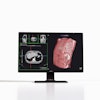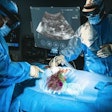Dear Advanced Visualization Insider,
With RSNA 2018 just around the corner, these are exciting times for medical 3D printing -- a centerpiece of the Advanced Visualization Community over the past several years. 3D printing continues to garner more attention as clinicians discover new ways to apply the technology in healthcare.
One of the main applications of 3D printing has been to provide clinicians with enhanced visualization of patient anatomy during preoperative planning. In a new article, U.S. researchers discussed the ways in which 3D-printed heart models helped improve presurgical planning for complex surgery, as well as patient outcomes. Read about the experience of Phoenix Children's Hospital in the first three years since it launched its 3D printing lab in this edition's Insider Exclusive.
Several different groups have demonstrated other uses for medical 3D printing:
- Investigators from South Korea enriched patients' understanding of lung cancer surgery by showing them transparent, flexible 3D-printed lung models during consultation.
- Surgeons at a Michigan hospital reported that simulating cleft lip repair on a 3D-printed skull base had the potential to accelerate training for residents.
- In Taiwan, clinicians created 3D-printed models of rib structures to facilitate planning for rib fracture stabilization.
- Researchers from Canada used 3D-printed models of human heads to boost the workflow efficiency of whole-brain radiotherapy.
- A team of scientists and engineers from Pennsylvania calibrated 7-tesla MRI scanners with a 3D-printed head phantom.
In addition, relying on a combination of 3D printing and virtual reality, a multidisciplinary team of physicians from South Korea was able to determine the best course of treatment for an obscure lung cancer that was otherwise indiscernible on conventional CT scans.
Augmented reality technology, too, has shown its utility in a variety of clinical settings. As one example, a group from China used augmented reality to visualize brain CT scans directly on a patient's head while performing a neurosurgical procedure.
Yet another form of 3D visualization, cinematic rendering, has risen in popularity for the high detail of its photorealistic images. Cinematically rendered CT scans have been particularly beneficial to clinicians tasked with managing intricate cases, including the evaluation of ovarian cancer and associated metastases.
Stay informed on all the latest news and innovative research in this rapidly advancing branch of medicine by heading over to our Advanced Visualization Community at AuntMinnie.com.



















